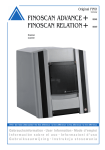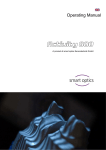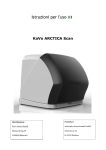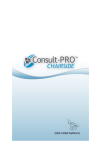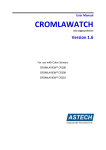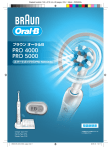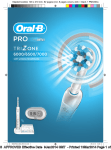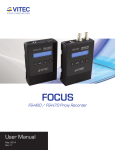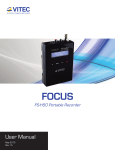Download Operating Manual
Transcript
Operating Manual For software version 2.2.23 status 01/2012 A product of smart optics Sensortechnik GmbH Activity 845 1 Table of contents 1. LIST OF FIGURES 4 2. ICONS 5 3. GENERAL SAFETY INFORMATION 6 4. TECHNICAL SPECIFICATIONS 6 5. CE DECLARATION OF CONFORMITY 8 6. GENERAL SAFETY INFORMATION 9 7. INSTALLATION 12 8.1 SELECTING THE INSTALLATION LOCATION 12 8.2 UNPACKING AND SCOPE OF DELIVERY 12 8.3 CARRYING POINTS 13 8.4 REMOVING THE SCANNER FROM THE PACKAGING 14 8. INSTALLATION 16 9.1 INSTALLING THE SCANNER 16 9.2 INSTALLING THE COMPUTER 17 9.3 INSTALLING THE SOFTWARE 17 9.4 IMPORTING CALIBRATION DATA 23 9. CALIBRATION PROCEDURE 26 10.1 AXIS CALIBRATION 26 10.2 3D CALIBRATION 28 10. BASIC INFORMATION ABOUT THE DEVICE 30 11.1 FUNCTIONING OF THE ACTIVITY845 30 11.2 INTERIOR ACTIVITY845 34 11.3 OBJECT HOLDER 35 2 11. SCANNING PROCEDURE 38 12.1 CLAMPING THE MODEL 38 12.2 CREATING A PRESCAN 38 12.3 CASE STUDY: BRIDGE WITH BITE REGISTRATION 41 12.4 CASE STUDY: COMPLETE JAW SCAN 50 12.5 CASE STUDY: OCCLUSION SCAN 54 12. SYMBOLS 62 13.1 THE SYMBOLS 62 13.2 THE 3D VIEWER SYMBOLS (OBJECT VIEW) 65 13.3 ACTIVITY MENU OPTIONS 66 13.4 OPTIONS SETTINGS MATCHING 67 13.5 OPTIONS SETTINGS GENERAL 68 13.6 OPTIONS SETTINGS INSTALLATION 72 13. MAINTENANCE AND SERVICING 73 14. FAULTS AND REPAIRS 73 15. ENVIRONMENTAL FACTORS AND DISPOSAL 73 16.1 PACKAGING 73 16.2 DISPOSAL 74 16. IMPRINT 74 3 1. List of figures FIGURE 1 SCANNERSIDE VIEW ..................................................................................................................................................... 15 FIGURE 2 SCANNER HOLDING POINT ............................................................................................................................................ 15 FIGURE 3 : SCANNER HOLDING POINT .......................................................................................................................................... 15 FIGURE 4 MAIN SWITCH ON THE FRONT OF THE DEVICE ................................................................................................................... 16 FIGURE 5 SETUP/INSTALLATION .................................................................................................................................................. 18 FIGURE 6 LANGUAGE SELECTION ................................................................................................................................................. 18 FIGURE 7 SETUP WIZARD .......................................................................................................................................................... 19 FIGURE 8 SELECT INSTALLATION LOCATION.................................................................................................................................... 20 FIGURE 9 START MENU............................................................................................................................................................. 20 FIGURE 10 CREATING A DESKTOP SYMBOL .................................................................................................................................... 21 FIGURE 11 INSTALLATION .......................................................................................................................................................... 22 FIGURE 12 INSTALLATION .......................................................................................................................................................... 22 FIGURE 13 COMPLETING THE INSTALLATION …………………………………… ……………………………………………………………………………………..23 FIGURE 14: NO CALIBRATION DATA ............................................................................................................................................. 24 FIGURE 15: FOLDER SEARCH ...................................................................................................................................................... 24 FIGURE 16: SELECTED FOLDER .................................................................................................................................................... 25 FIGURE 17: IMPLEMENTING THE SENSOR DATA .............................................................................................................................. 25 FIGURE 18: CALIBRATION MODEL WITH SPACER PLATE IN ACTIVITY845 .............................................................................................. 26 FIGURE 19: SCAN SOFTWARE CALIBRATION .......................................................................................................................... 27 FIGURE 20: SCAN SOFTWARE CALIBRATION ................................................................................................................................... 27 FIGURE 21INDIVIDUAL CALIBRATION BLOCK .................................................................................................................................. 28 FIGURE 22: CALIBRATION MODEL REGISTRATION............................................................................................................................ 29 FIGURE 23: COMPLETING THE CALIBRATION .................................................................................................................................. 29 FIGURE 24: DEVICE FRONT A845 ............................................................................................................................................... 32 FIGURE 25: DATA PLATE ........................................................................................................................................................ 33 FIGURE 26: ROTATING-SWIVELLING UNIT ............................................................................................................................. 34 FIGURE 27: ROCKER/ROTATING-SWIVELLING UNIT ACTIVITY845 ...................................................................................................... 34 FIGURE 28: INDIVIDUAL PARTS OF ACTIVITY 845 ................................................................................................................ 36 FIGURE 29: OBJECT HOLDER SYSTEM ........................................................................................................................................... 37 FIGURE 30: OBJECT HOLDER SYSTEM WITH MODEL ......................................................................................................................... 37 FIGURE 31: "NEW PROJECT"...................................................................................................................................................... 38 FIGURE 32: "NEW MEASUREMENT" ....................................................................................................................................... 39 FIGURE 33: 2D SCAN AND ENTRY SCREEN ..................................................................................................................................... 40 FIGURE 34: PROMPT NOTIFICATION ............................................................................................................................................ 42 FIGURE 35: DATA SET BEFORE "MATCHING" ................................................................................................................................. 43 FIGURE 36: "RESCAN" MODE ..................................................................................................................................................... 45 FIGURE 37: "RESCAN" .............................................................................................................................................................. 45 FIGURE 38: SAVE PROJECT ......................................................................................................................................................... 46 FIGURE 39: "MATCHING" PROCESS ............................................................................................................................................. 47 FIGURE 40: 3D STL DATA SET ................................................................................................................................................... 47 FIGURE 41: “BITE REGISTRATION" SYMBOL................................................................................................................................... 48 FIGURE 42: INFORMATION WINDOW .......................................................................................................................................... 48 FIGURE 43: SQUEEZE BITE ALIGNMENT PRESCAN ............................................................................................................................ 49 FIGURE 44: CUT BITE REGISTRATION ............................................................................................................................................ 49 FIGURE 45: CUT BITE REGISTRATION ............................................................................................................................................ 50 4 FIGURE 46: COMPLETE JAW 2D SCAN .......................................................................................................................................... 51 FIGURE 47: COMPLETE JAW ALIGNMENT PRESCAN ......................................................................................................................... 52 FIGURE 48: STARTING THE SCAN PROCESS .................................................................................................................................... 52 FIGURE 49: COMPLETE JAW 3D SCAN .......................................................................................................................................... 53 FIGURE 50: 3D-STL DATA SET ................................................................................................................................................... 54 FIGURE 51: TABS ................................................................................................................................................................... 54 FIGURE 52: FIXED JAW.............................................................................................................................................................. 56 FIGURE 53: ADD DENTAL SCAN ................................................................................................................................................... 56 FIGURE 54: NEW MEASUREMENT ............................................................................................................................................... 57 FIGURE 55: ANTAGONIST ALIGNMENT ......................................................................................................................................... 57 FIGURE 56: PRESCAN ............................................................................................................................................................... 58 FIGURE 57: VESTIBULAR SCAN.................................................................................................................................................... 58 FIGURE 58: "ARTICULATION" ICON ............................................................................................................................................. 59 FIGURE 59: SELECT LOWER JAW FIGURE 60: SELECT UPPER JAW.................................................... 59 FIGURE 61: LOWER JAW ALIGNMENT ........................................................................................................................................... 60 FIGURE 62: "NEXT" ................................................................................................................................................................. 60 FIGURE 63: UPPER JAW ALIGNMENT ..................................................................................................................................... 61 FIGURE 64: ALIGNED UPPER AND LOWER JAWS .................................................................................................................... 61 FIGURE 65: ARTICULATED STL DATA SET .............................................................................................................................. 62 FIGURE 66: ACTIVITY MENU OPTIONS ......................................................................................................................................... 66 FIGURE 67: SETTINGS - MATCHING ...................................................................................................................................... 67 FIGURE 68: SETTINGS - GENERAL.......................................................................................................................................... 68 FIGURE 69: SETTINGS - INSTALLATION.................................................................................................................................. 72 2. Icons This symbol indicates warning information Useful hints are marked with a light bulb in the operating manual 5 3. General safety information Proper use: The Activity845 scanner is intended for use in performing optical, three-dimensional measurements of human jaw models. It is possible to measure articulated models in order to simulate masticatory movements using corresponding software, as in an articulator. Anything other than the proper use is strongly advised against, as improper use may cause damage or injury. 4. Technical specifications Activity845 Axis 2 Dimensions 440 mm x 480 mm x 430 mm (WxHxD) Weight 32,2 kg Connection voltage 100-240 V AC, 50/60 Hz Power consumption 80 W Protection class IP11 Permissible temperature 18-30 °C range Measureable objects Plaster models of teeth Minimum clamping range 40 mm of the removable object holder Maximum clamping 70 mm range of the removable object holder Height adjustment // 6 Measuring time for the Single stump: < 55 sec./unit measurement of 3- bridge: < 90 sec. Complete jaw: < 90 sec. Resolution Basic resolution of the 3D sensing head:62,5 µm 80 x 60 x 85 mm (x,y,z) Accuracy +/-10 µm standard deviation measured at test specimen, determined via min. 50 measuring points with 10 repetitions each Output data format STL Interfaces USB Scope of delivery Scanner, power cord, 2x USB cable, CD with operating software and calibration data, operating manual, calibration block System requirements Operating system Windows 7 Ultimate 64® Bit, Intel core 2 Quad CPU Q 9550 2.83 Ghz or higher, RAM 8 GB, highperformance 3D graphics card with min. 1GB RAM e.g. GeForce, 320 GB hard disk 7 5. CE declaration of conformity 8 6. General safety information When setting up, commissioning and operating the scanner, you must observe the following safety information at all times. 1. The device may be operated only by adequately trained staff who have knowledge concerning the proper use of the device as well as the safety information cited here. 2. The device is intended exclusively for use in dry, enclosed rooms. 3. The device may be operated only on a stable base (tabletop, bench, etc.) that has a load bearing capacity which is at least twice the net weight of the scanner as stated in the technical specifications. The base must be fixed to a building wall or have a braced support frame that is suitable for absorbing vibrations occurring during operation of the scanner. Besides the pure load-bearing capacity, the sturdiness and stability of the base is crucial for safe operation of the scanner. 4. The information on transport and storage must be observed when lifting and transporting the scanner. 5. Please do not place any objects on the scanner, as there is a risk that these can fall down owing to the surface structure as well as the resultant vibrations during scanning operation. 9 6. The “Activity 845” scanner has been developed and manufactured in accordance with the applicable safety standards and with the greatest possible care. In spite of this, the risk of an electric shock, overheating or fire due to technical defects in individual components cannot be totally excluded. You should therefore switch the device off when not using it for longer periods and when it is left unattended. This also benefits the environment, as it means less electrical energy is consumed. 7. The scanner contains a motion unit comprising three electrically powered axes of rotation that serve to position the object during scanning. To enable the object to be clamped in a definite position as well as a faster workflow during scanning, the movement axes are also kept in position electrically when the flap is open. An electronic protection mechanism prevents the motors from starting up unintentionally or continuing to operate when the flap is opened. As there is a theoretical possibility of the protection mechanism failing, this entails a residual risk which you can counter by complying with the following rules of use: 7.1. Do not open the front flap during a scanning procedure until after a corresponding prompt or the end of a scanning procedure has been displayed on the screen. 7.2. If you determine that the scanner is acting unusually, such as an uncontrolled or continuous rotation of one or more movement axes, switch off the scanner at the main switch before opening the flap. If this unusual behaviour continues after switching on again and restarting the software, do not use the scanner any longer. The device must be marked as defective and prevented from being put into operation again until the fault is rectified. 10 7.3. Do not reach inside the scanner if one or more movement axes move despite the flap being open. Switch the scanner off immediately. The scanner may no longer be used in this case and must be marked as defective and prevented from being put into operation again until the fault is rectified. 7.4. During scanning, never reach below the area between the rocker and case that is marked by warning signs. This also applies if the rocker is swivelled upwards to the rear. Before removing any objects that have fallen into the scanner or before cleaning the scanner compartment, you must switch off the device at the main switch. 8. If you notice that the scanner is damaged or defective, you must label it as defective and make sure that it is not used until it has been repaired. 11 7. Installation 8.1 Selecting the installation location Before installing the scanner, you should select a suitable installation location. A suitable, stable base (bench, tabletop etc.) should be chosen as an installation location. If you install the computer required for operating the scanner underneath the worktop, the available worktop area should be at least 1.1 m x 0.75 m (front width x depth). If you plan to also place the computer on the worktable, the area must be enlarged corresponding to the dimensions of the computer. The selected workplace should, if possible, face away from windows or strong artificial light, as excessively strong external light can lead to undesirable reflections on the monitor that can interfere with the functioning and results of the optical scanner in extreme cases. 8.2 Unpacking and scope of delivery Inspect the external packaging for visible damage as soon as you take delivery of the scanner. If you notice that the packaging is damaged, inform the delivering forwarder and your specialist dealer immediately. The device is delivered in a strong outer box on a wooden pallet. After removing the straps, open the upper folding lid of the box. The box contains a foam piece that protects the scanner, which is packed below during transport. First, pull the foam piece upwards out of the box. You can then lift off the whole box upwards. The net weight of the scanner is approx. 32,2 kg. Always observe the following instructions to lift the scanner properly out of the packaging and position it at its location of use. 12 Two people must lift the device out of the packaging and place it on the prepared, intended workplace. Be sure to transport the scanner (while still on the pallet) as closely as possible to the workplace to avoid longer transport distances. The scanner accessories can be found at the base of the packaging. Check that the scope of delivery is complete. Scope of delivery Activity845 1 scanner X 2 USB cabels X 1 hex key X 1 user manual in PDF format X 1 calibration object X 1 software installation CD including calibration X data 1 removable object holder X 1 measuring range template 1 spacer plates 10mm 8.3 Carrying points Carrying points are provided to move the device. Please note these specifications. Stand so that one person each is positioned to the left and right of the scanner. Take hold of the scanner with one hand at the bottom front of the scanner and the other hand at the top rear. In this way, the scanner can be safely tilted slightly to the rear. 13 Carrying points, front Person A Person B Never carry the scanner with the flap open, and do not carry the scanner using the flap itself. 8.4 Removing the scanner from the packaging 1. To remove the scanner from the packaging, one person stands to the left of the scanner and the other person stands to the right. 2. Each person must take hold of the scanner with one hand on the upper support point. Next, tilt the scanner slightly to the rear until you can grip underneath the scanner at the front with your other hand. (Figures 2 and 3) 3. Working together and at the same time, lift the scanner out of the packaging and place it at the installation site. 14 4. When doing do, make sure that you have free access to the workplace and do not trip over the packaging. Remove the upper part of the packaging Figure 1 scannerside view Grip and tilt the scanner at the upper holding point (one holding point each side for each person). Figure 2 Scanner holding point Lift the scanner at the same time and place it at the installation site. Figure 3 : Scanner holding point 15 8. Installation 9.1 Installing the scanner Please make sure that the mains switch is at the "0" position before installation. (The position of the main switch maybe different) Figure 4 Main switch on the front of the device 1. Connect the device to the USB cables using the USB ports on the rear of the device. Functional earth Fuse USB camera USB device control Mains connection 16 2. Connect the other ends of the USB cables to USB connections on the rear of your computer. 3. Connect the scanner to a power source via the mains connection on the rear. 4. Now switch the scanner on at the mains switch. 5. Now first switch the scanner off again and continue by installing the computer and operating software. 9.2 Installing the computer Install the computer following the installation instructions of the computer manufacturer. 9.3 Installing the software As each scanner has been calibrated individually at the factory, the data on the installation CD is valid only for the corresponding scanner. This calibration data contains a code that can be enabled only by the corresponding scanner. Therefore, compare the serial number indicated on the data plate of the scanner with the serial number indicated on the CD to make sure they match before installation. If you have mistakenly installed an incorrect version of the software, you must uninstall the incorrect version first. If you are installing the Activity software on your computer for the first time, use the installation CD provided with the scanner. A window will open after inserting the CD. The "Setup" icon opens and must be selected to start the installation. 17 Figure 5 Setup/Installation Now select the required language (Fig. 6) and confirm your selection with the "Next" icon (Fig. 7). Figure 6 Language selection 18 Figure 7 Setup Wizard Define the installation location for the software by using the "Browse" button to define the path. The installation program suggests a standardized path that you can use. Having selected the path, please confirm this with "Next". 19 Figure 8 Select installation location Define the software name in the "Select Destination Location Folder" window. Then click on "Next". Figure 9 Start Menu 20 Select whether you require a Desktop symbol and confirm with "Next". Figure 10 Creating a Desktop symbol Before starting the installation, check your selected settings and chose "Next". The installation starts immediately (Fig. 11). 21 Figure 11 Installation Figure 12 Installation Confirm the installation of the driver with "Next". Then complete the installation with "Finish". The drivers are now installed and the process is completed. 22 Figure 13 Completing the installation 9.4 Importing calibration data The scanner–specific calibration data must be imported during the initial installation. Start the Activity software via the Desktop icon or from the Start Menu. This is followed by a software message (Calibration directory not found). Click "OK" to start the "Installer Tool". 23 Figure 14: No calibration data This tool makes it easier to install the required sensor data. Click "Search" to select the file path (SO-202.... ). When doing so, select only the parent folder and confirm with "OK". Figure 15: Folder search Click "Next". The calibration data is imported into the Activity software. 24 Figure 16: Selected folder The scanner installation has been completed; you can close the installer with "OK" and restart the scanner software. Figure 17: Implementing the sensor data 25 9. Calibration procedure 10.1 Axis calibration Start the scan software by clicking on the Activity icon located on your Desktop. Insert the spacer plate in the Activity850 scanner. Clamp the calibration model on the removable object holder and place it in the scanner (Fig. 18). The Activity845 can be calibrated without a spacer plate. Object base Spacer plate Figure 18: Calibration model with spacer plate in Activity845 The path Options Service Axes Calibration contains the start command for calibrating the axes. 26 Figure 19: Scan software calibration The scanner now performs an automatic axis calibration. The following message will appear after the axis calibration is complete: Figure 20: Scan software calibration If the axis calibration fails, please check the height alignment of the model in the measuring field. (See Figure 18 ) 27 10.2 3D calibration Each calibrating block is measured industrially. These individual values can be found on the calibration model. Figure 21Individual calibration block These values must be saved in the software after reinstalling the software or replacing the calibration model. Start this procedure as follows: A window opens under Options Service Calibration object registration (Fig. 22). 28 Figure 22: Calibration model registration Individual values are indicated on the rear of the calibration model. Please enter these in fields #1 and #2. Confirm the procedure with "OK". You can start the 3D calibration only by selecting the start command under the item Options Service 3D calibration Complete. The system now performs a 3D calibration; this can take several minutes. The following message will appear at the end of the calibration (Fig. 23). Figure 23: Completing the calibration The 3D calibration was successful. Confirm with "OK". Repeat the calibration about every four weeks and each time the scanner is transported in order to ensure the accuracy of the scan results. 29 If the axis calibration fails, please check the height alignment of the model in the measuring field. (See page 16, Fig. 18) 10. Basic information about the device 11.1 Functioning of the Activity845 The optical scanner with the designation "Activity845" is used for the three-dimensional measuring of jaw models, in orthodontic and prosthetic applications. The most important components of the scanner are the 3D sensor and the positioning unit with object holder. The 3D sensor consists of a camera and a projector. The projector throws a light pattern onto the object to be measured at an oblique angle of incidence; the object is simultaneously monitored with the camera. Since the camera cannot capture the entire object if the object is complex in shape, as in the case of a jaw model, the object is mapped with a series of individual scans from various perspectives. The software then combines the individual scans to create a complete data set. The positioning unit positions the object to be measured in the required perspectives opposite the 3D sensor. It contains motorized axes for this, which can rotate and tilt the model on the base relative to the 3D sensor. The entire scanning procedure is extensively automated so that you only have to carry out the essential operating steps. 30 A 3D scan is created as follows: The model to be measured is mounted on the object holder: The model is fixed on the object holder for this. Prescan: The prescan compiles a two-dimensional image of the clamped model. This image serves as a basis for the following scan definition. Scan definition: The scan definition defines the positions in which the model is to be scanned. The scan definitions are formulated using the prescan image after the user highlights the tooth positions on the screen. Individual measurements: After completing the scan definition, the software automatically calculates a scan program for recording the positions specified by the operator and starts these. The positions provided in the scan program are started up by the positioning unit and a 3D measurement is performed. When scanning adjacent tooth stumps, it is usually necessary to measure the stumps in isolation without the adjacent stumps, as otherwise the interdental area cannot be captured by the 3D sensor. The software will therefore prompt you to present the relevant tooth stumps individually and freely, i.e. to remove all other stumps from the saw cut model. Matching and data storage: The recorded individual measurements are grouped together in the "Matching" mode. The finished data set is then saved on the hard disk of the computer. 31 Visualization: When the matching process is complete, the scan result is displayed on the monitor so that you can directly assess the result visually. Operating controls The most important components and operating controls of the scanner are explained below. Lid/Case opening Device designation Figure 24: Device front A845 Systemauszug 32 Device serial number CE mark Figure 25: Data plate 3D sensor number Use only the USB cables included in the scope of delivery, if possible. These have undergone multiple testing at our company in conjunction with your scanner. Communication problems can result between the scanner and PC if cable lengths over 2 metres are used. 33 11.2 Interior Activity845 Lid/Case opening 3D sensor (not visible from outside) Object base/ Model holder Rotatingswiveling unit Mains switch Figure 26: Rotating-swivelling unit Main/ Swivelling axis Rotatingswiveling unit Base holder Figure 27: Rocker/Rotating-swivelling unit Activity845 34 Positioning unit (inside the scanner): The positioning unit contains the fixed base holder on which the object to be measured is fixed as well as a rotating and swivelling unit powered by an electric motor. Rotating and swivelling unit/Object holder: The rotating unit allows you to position the object to be measured in any position relevant to the camera of the 3D sensor located on the object holder via the electric motor. The swivelling unit allows you to swivel the entire setup comprising rotating unit and object holder and hence record side views of the object to the measured. Interior lighting: The interior lighting switches on automatically when the flap is opened. If the flap remains open for longer than 5 minutes, the lighting will switch off automatically. The interior lighting switches off automatically when the flap is closed. 11.3 Object holder Individual parts of the object holder The scope of delivery for the object holder of the Activity845 consists of the following components: 35 1 3 2 4 Figure 28: Individual parts of Activity 845 Key to the scope of supply of the object holder system 1. Calibration object for axis and 3D calibration. 2. Hex key for clamping or loosening the plaster model on the model holder. 3. An additional spacer plate with magnet for height alignment. 4. Removable object holder for non-articulated jaw models. The model is fastened on the object holder using a clamp. This clamp is fastened or released using the hex key (2). 36 System base plate Figure 29: Object holder system In order to ensure an optimum alignment of the model to be scanned in the measuring range, a maximum of one additional spacer plate can be mounted on this. The object holder can now be fixed on the base or spacer plate. Example: Standard model holder without spacer plate Figure 30: Object holder system with model 37 11. Scanning procedure 12.1 Clamping the model Clamp the model in the removable object holder and align the height using the spacer plate (see Figure 30). 12.2 Creating a prescan Depending on the scanner and CAD software combination, it is not necessary to fill out the project information thanks to a special interface, as this is automatically undertaken by the CAD software (e.g. with dentCreate!®). The scanner uses software messages to guide you step by step through the entire scanning procedure. Switch the scanner on at the mains switch. The scan software opens after starting by double clicking on the "Activity" icon on your Desktop. An automatic referencing of the axes takes place. The project entry screen appears: Figure 31: "New project" 38 Information such as laboratory, dental technician, patient, etc. is entered in these entry fields. The information entered here is added by setting the checkmark in the "New project" of the patient ID (Project name). If you do not enter anything in the entry fields, the time and date data will be used as standard. After confirming with "OK", a new field will appear, allowing you to name the following measurement. Figure 32: "New measurement" After providing a name for the measurement, confirm this with "OK". The scanner then begins with a preview image. After a few seconds, a 2D scan will appear on the viewer, and you can select your individual scan type. During the prescan or the 3D scan, the symbol is displayed, and you can use this to cancel the corresponding scanning process. 39 Figure 33: 2D scan and entry screen A tooth diagram of the jaw to be scanned is located at the upper left. Activate the "Jaw type" checkbox to select whether an upper or lower jaw is involved. Indicate under "Scan type" whether only one jaw model (standard) is to be processed or whether you have more information to be scanned, such as a bite registration, a wax-up or a scan body (abutment). Below the tooth diagram, you will see several boxes that are coloured differently to make them easier to distinguish. These checkboxes are used to activate scan strategies for the restoration types, such as "Simple coping", "Anatomically reduced coping", „"Veneer", etc. For this, please first select your required restoration types and then click on the corresponding tooth in your tooth diagram. You can learn about further procedures for operating the device based on the examples below. 40 12.3 Case study: bridge with bite registration Case study: In this example we shall scan a bridge of 34-36. Select "Anatomically reduced coping" under scan type and click on teeth 34, 36 and 35 as "Reduced pontic" in the tooth diagram. The teeth are now coloured with the relevant colour of the scan type in the tooth diagram. Coloured squares appear in the 3D viewer at the same time (see Fig. 33). These squares indicate the scan position of the tooth. The corresponding colouring coincides with the selected scan strategy/scan type under the tooth diagram on the left. Keep the left mouse button pressed to move these squares over the centre of the corresponding tooth stump. The scan software now detects the position of the tooth and will apply the corresponding scan strategy for these coordinates. If you wish to delete a scan position, click on the corresponding checkpoint in the tooth diagram. You can change the scan type of a position in the same way. Select the new scan type and click on the position that is to be changed in the tooth diagram. The scan type defined previously is then replaced by the newly selected one. The colouring of the tooth highlighted in the diagram changes correspondingly. After aligning all scan positions, start the 3D scan with this icon. 41 The scanner now moves the model down automatically, based on the predefined scan strategy, and compiles a number of individual measurements from various perspectives. In the case of adjacent teeth, it is necessary to additionally measure the individual teeth independently, as otherwise the interdental area cannot be recorded with sufficient accuracy. The entire scene is therefore always measured in the first step, and in the second step you are prompted to present one tooth each freely. Figure 34: Prompt notification Remove all teeth from the saw-cut model, apart from the one required. Close the front flap and click "Continue" or "Continue with axis homing". 42 If "Continue with axis homing" is selected, a new reference travel of the axes, object holder or all axes is first executed before the measurement is continued, after removing the stumps. The object holder is moved into the predefined initial position for this. This selection option is due to the fact that the motor driving the object holder could also be turned by hand when switched on with a correspondingly high action of force. The motor is not damaged by this, but the defined motor position is lost. It may be the case in individual situations that greater force has to be applied for very tightly-fit stumps, and the object holder is consequently turned inadvertently. Here a considerable "slipping through" of the object holder can be heard, so that you usually recognize such a case. Select the option "Continue" to continue the scan. After the individual tooth presentation is completed, you can evaluate the scan data in the 3D viewer for completeness (see Fig. 35). Figure 35: Data set before "matching" 43 You can rotate, move and zoom the model using the following mouse functions: Rotate model Left/Right mouse button Move model Both mouse buttons Zoom Scroll wheel If the model scan exhibits holes or blurred areas, you can correct these with the rescan function. A green cross is located at the top of the 3D viewer, which can be used to start the "Rescan Mode". If "Rescan Mode" is enabled, this green cross will be shown in the centre of the 3D viewer (see above). Now the edge of the data hole must be positioned below the cross using the familiar mouse options (left mouse button rotate, right mouse button move and scroll wheel zoom). If the centre of a hole is positioned directly below the cross, the scanner will move to an incorrect rescan position and possibly a recording at another point. 44 Cross hairs next to the area to be scanned Area to undergo a rescan Figure 36: "Rescan" mode Figure 37: "Rescan" If you click on the blue start button, any number of rescans can now be performed until all desired areas are recorded. 45 For details, such as in interdental spaces, please remove all teeth that impair the sensor's view of the area to be closed, e.g. directly adjacent teeth and segments that are not required for the scan. Once you have recorded all relevant details, click on the green cross again to complete the rescan mode. To remove superfluous areas on the model, you can now cut the data set to size with the following tool. Cut data inside the selection Cut data outside the selection Undo the last cutting action Select a cut function and click with the left mouse button around the required area. In this way, you select the area on and around the model. To complete the process, make the last selection with the right mouse button. The model has been cut to size and can be reset with the "Undo cut action" icon. The smaller the data set is cut to size, the smaller the data volume which has to be added together. Save the scan data after cutting the data set to size by clicking the "Save" icon. Figure 38: Save project 46 After completing the scan and cutting the data set to size, you need to perform a matching. To do this, click on the following icon: Figure 39: "Matching" process The recorded individual measurements are automatically added together by special algorithms, and an STL is created. This process is known as matching. You can set the quality of the STL under Item 10.4. After matching the records, the completed data set is reloaded into the 3D viewer. If more areas are missing, the rescan mode can be repeated on the STL data set. Figure 40: 3D STL data set 47 Once the model data set is compiled, it is possible to add a bite registration scan to the project. The bite registration function must be activated for this: Figure 41: “bite registration" symbol You are then prompted to position the bite registration and give the measurement a name. Once you have given the measurement a name and confirmed with "OK", a new information window will appear. Figure 42: Information window Confirm with "Yes", and the device will immediately commence with the 3D scan based on the selection created in the main scan (see Fig. 42). After confirming the message with "No" , the prescan is started and you can then newly define the selection for the bite registration in the prescan image (see Fig. 43) 48 Figure 43: Squeeze bite alignment prescan Next the 3D scan is performed as usual with the following symbol: Figure 44: Cut bite registration 49 After completing the 3D scan, you can evaluate the result and, if necessary, perform rescans, or cut to size with the cutting tool described above. Save the change and start the matching process. The matching button for a bite registration scan is not enabled unless the model data set has been matched previously. Figure 45: Cut bite registration The bite registration is then loaded into the 3D viewer and visualized. 12.4 Case study: complete jaw scan Clamp the model on the removable object holder. Ensure the height alignment in the measuring range. (See Fig. 30). For certain applications, e.g. archiving in orthodontics, it is necessary to simply and quickly scan a complete jaw. Unless high detail accuracy is required for this, we recommend setting the thinning to MEDIUM or STRONG. Create a new project as described in section 9.3 and start the 2D scan. 50 Figure 46: Complete jaw 2D scan Select between lower and upper jaw correspondingly under "Jaw type". Activate the "Complete jaw" checkbox under "Scan type" (see Figure 46). 51 A new control (blue line) is shown in the prescan view: shift move Figure 47: Complete jaw alignment prescan The scan range is adapted to the size of the object to be scanned using the yellow checkpoints. The jaw must be inside the blue outline, the scan range. Start the 3D scan. Figure 48: Starting the scan process The scanner now moves the model down automatically, based on the predefined scan positions, and compiles a number of individual measurements from various perspectives. 52 Figure 49: Complete jaw 3D scan After the 3D scan, cut the data set if necessary. Now start the STL calculation with the Matching button. The matching process for a complete jaw can take up to several minutes, irrespective of the number and size of the scans to be matched or the selected thinning level and computer capacity. The jaw scan is visualized in the 3D viewer as shown below: 53 Figure 50: 3D-STL data set You can tell from the colouring of the file tab whether a data set is already "matched", i.e. whether there is an STL. (Blue - individual records, Yellow - STL data set, Grey - 2D scan) (see Fig. 53) Figure 51: Tabs 12.5 Case study: occlusion scan You can also scan a jaw pair in occlusion. In our example, we shall also scan the lower jaw scan from section 9.3. (3-member bridge) and the upper jaw scan from section 9.4. (complete jaw scan) in occlusion. To do this, we compile the scan data for the upper jaw and the lower jaw as described above. Matching is not yet carried out. Sample images: 54 Prescan lower jaw Prescan upper jaw STL of the lower jaw STL of the upper jaw As soon as you have scanned in the lower and uppers jaw, you must perform a "vestibular scan", which allows the software to calculate how the jaw halves are located relative to one another. The scanned jaws do not have to be matched, as all scans performed are added together at the end of the process. You can align the models with an elastic band, adhesive stick or other fixing option, so that the models sit rotationally secure to one another. Place the models fixed to one another in the scanner and close the lid. 55 Use the spacer plate to ensure the correct height alignment. Figure 52: Fixed jaw You must activate "Add dental scan" by clicking on the following icon to carry out a vestibular scan: Figure 53: Add dental scan Give the file a name and perform a prescan. 56 Figure 54: New measurement Once the prescan has been performed, click on "Antagonist Alignment" in the left of the project entry screen, after which you can select what method is to be used to perform the vestibular scan. Figure 55: Antagonist Alignment 57 A blue outline will appear in the 2D image after clicking on "Antagonist Alignment". Align this to the vestibular progression of the 2D scan (see Fig. 55). Figure 56: Prescan Start the scanning process as usual. The outer sides (vestibular view) are scanned by the device, as shown below: Figure 57: Vestibular scan 58 Click on the articulation icon: Figure 58: "Articulation" icon The software now indicates in succession which jaw has to be loaded. First confirm the "Lower jaw tab" with OK. Then proceed in the same way with the "Upper jaw tab". Figure 59: Select lower jaw Figure 60: Select upper jaw The alignment for the "NOARTICULATOR" must always be performed with the 3-point method. To obtain a complete, mutually aligned STL data set from both jaw halves, the individual scans must be added together. You have to indicate reference points on the scans for this. 59 Select at least three reference points by clicking on them once with the left mouse button. Points which you can find again on the vestibular image are ideally suitable for this. If you have clicked on a point by mistake, you can undo this by with the "Delete" key on the keyboard. You can move the scan image with the right mouse button and rotate the view in the 3D viewer with the "Shift" key and the left mouse button. Once you have highlighted at least three points, press the "space bar" on your keyboard to toggle between the lower jaw scan and vestibular scan. Search for and select the same points as previously for the vestibular scan. Figure 61: Lower jaw alignment Once you have selected the reference points of the lower jaw to your satisfaction, click on the "Next" icon in the viewer to load the upper jaw. Figure 62: "Next" 60 Follow the same procedure as with the lower jaw and select the "Next" icon again once you are satisfied with the selection. Figure 63: Upper jaw alignment A calculation for the jaw is now carried out. After a few seconds, the result will be displayed to you in the 3D viewer, which you can then check for correctness. Figure 64: Aligned upper and lower jaws 61 You can detect an offset more easily using differing colour schemes for the upper and lower jaw. If you are pleased with the data set, confirm with the "Next" button, after which the software will automatically commence the matching process. All data sets performed are now matched. This can take several minutes. Sample image for a finished STL data set in an upper versus lower jaw situation: Figure 65: Articulated STL data set The data sets can now be loaded into various CAD programs for further processing. 12. Symbols 13.1 The symbols Activity icon 62 Perform 3D scan Perform 2D scan Move automatically to the service position Open a new project Open an existing project or STL file Start the matching process Add a new measurement Add bite registration Add wax-up Continue in workflow 63 Cut data inside the selection Cut data outside the selection Undo the last cutting action or measurement Open the dialog "Fill holes" Save the last work step (possible if activated blue) Open "Settings" dialog Information on the product End the Activity program 64 13.2 The 3D viewer symbols (object view) Show camera angle Show front view Show rear view Show left side Show right side Show upper side Show lower side Show data set in isometric alignment Rotate the object around the X axis only Rotate the object around the Y axis only 65 Rotate the object around the Z axis only Normal rotation mode 13.3 Activity Menu options Figure 66: Activity Menu options 66 13.4 Options Settings Matching Figure 67: Settings - Matching Cylinder: The checkbox is used to activate a cutting filter, which cuts the upper and/or lower area of the STL data set. The dimensional unit is millimetres. General settings: Thinning out is used to determine the STL accuracy and hence the data size. The maximum resolution of the sensor is reproduced at "OFF". A somewhat larger spacing of the pixels to a data set is linked under "LOW". This spacing is enlarged further at "MIDDLE" and "STRONG". "AUTO" varies the thinning out as selected. The stronger the thinning out, the smaller the linked data set. The greatest accuracy is therefore attained when thinning out is set to "OFF" or "LOW". 67 13.5 Options Settings General Figure 68: Settings - General Saving images BMP: A BMP (bitmap) of the relevant recording position is created upon activation. This image, in which the light stripe pattern can also be seen, is also saved in the project directory. These images serve as an aid if any measuring errors occur. 2D viewer Brightness: You can set the light intensity of the camera live image here. These settings do not have any effect on the 3D measurements. 3D viewer 68 Colour top: You can set the background colour of the viewer for the upper area here. Colour bottom: You can set the background colour of the viewer for the lower area here. Object colour You can determine the colour in which the 3D object is to be displayed here. Object colour rescan You can determine the colour in which the last manually added image is to be displayed here. Smooth shading Smoothes the surface of the 3D object in the viewer additionally. This setting does not have any effect on the 3D measurement. Reflection brightness You can adapt the reflection of the light on the object in the 3D viewer here. Reflectivity You can determine the intensity of the reflection on the object in the 3D viewer here. Transparency If you activate the checkbox, you can change the button command assignment on your mouse for moving and rotating the object in the 3D viewer. Plaster appearance The light intensity of the sensor during the measurement is influenced by this. "Bright" for white plaster, "Standard" for beige-coloured, and "Dark" for very dark plaster. General settings: Accompany actions with sound 69 If activated, the computer will emit a signal for every prompt via the installed speaker. However, this function is not supported by every PC system. Show errors If you activate "show errors", a window with the corresponding error message and description will appear if exceptions occur. Show pixel cloud when rotating 3D view (for speed) If you activate the checkbox, the object will be displayed in the 3D viewer as a pixel cloud when moving with the mouse. This optimizes the visualization speed during the movement. Log information If activated, every work step of the scanner and software as well as the joint communication is saved in a special folder. This function is necessary for technical support. A log file is written that logs all settings and procedures and issues a detailed error message if problems occur. Fill large holes If sporadic "data holes" appear after a scan, you can close these using the “Fill holes" function. The size of the hole to be closed is limited upwards by entering the area in mm2. We recommend that you use this function for flat surfaces only. Incomplete areas at preparation limits or sharp, occlusal edges should not be extended by this, as the area to be replaced is only interpolated. Show measurements at the highest resolution If you activate the checkbox, the object will be displayed in the 3D viewer at an even higher resolution. The object calculation when adding new records as well as during movements requires much greater capacity from the graphics card and can lead to time delays. 70 Prompt for matching on raw scan data You can use this function to define whether matching is to be made to the existing STL or to the existing individual images. The query is only set for an existing STL. Always base matching on raw scan data To create the STL, the existing individual images are used again during rescans or supplementary scans, and an existing STL is never added for calculation. Always delete scan data on program exit The existing individual images are automatically deleted irrevocably when the program closes. 71 13.6 Options Settings Installation Figure 69: Settings - Installation Work Folder: The storage location of the scan data can be changed here. All data is created and saved in this folder. Dental System: You can indicate what tooth scheme you prefer in the Dental System. Language: The language of the user interface is set here. The following are available for selection: German, English, Spanish, French, Italian, Portuguese, Romanian, Turkish, Chinese, Chinese Traditional, Greek and Russian. 72 13. Maintenance and servicing The axes should be calibrated every four weeks using the calibration model supplied to ensure consistently good results. They should also be calibrated each time the device is transported. We also recommend performing an axis calibration at temperature fluctuations of +/- 15 °C. The scanner should be cleaned regularly when in service. To do this, turn the scanner off and use a vacuum cleaner to carefully remove any dust and foreign objects that have accumulated in the base area of the scanner. The optics of the 3D sensor are situated in the upper area of the interior of the scanner. Do not attempt to clean them, as inappropriate cleaning may result in damage. Cleaning with a slightly damp microfibre cloth is sufficient in most cases. Do not use paper towels, etc., if at all possible, as they can easily scratch the sensitive plastic surfaces. Please do not treat the case with strong cleaning agents. 14. Faults and repairs Please remember that the scanner is a sensitive optical device. Maintenance and repair may therefore be performed only by trained technicians. Faults that cannot be cleared by restarting the scanner or the program should be referred to customer service. 15. Environmental factors and disposal 16.1 Packaging You can return the packaging to your dealer for disposal. We strongly recommend that you keep the packaging so that it can be used if you need to transport the scanner or if you have to return the scanner to us in the event of a warranty claim. 73 16.2 Disposal You can return the scanner to the manufacturer or dealer for disposal. Please remember that the scanner is designed exclusively for commercial or industrial use. It must therefore not be taken to public waste facilities for disposal. Please contact your dealer or the manufacturer regarding disposal. You can find out more at www.smartoptics.de by going to Company and then Environment. WEEE registration number: DE47893210 16. Imprint Manufacturer: smart optics Sensortechnik GmbH Lise-Meitner-Allee 10 44801 Bochum Germany Please contact your dealer if you have any questions. We reserve the right to make changes due to technical progress. 74












































































